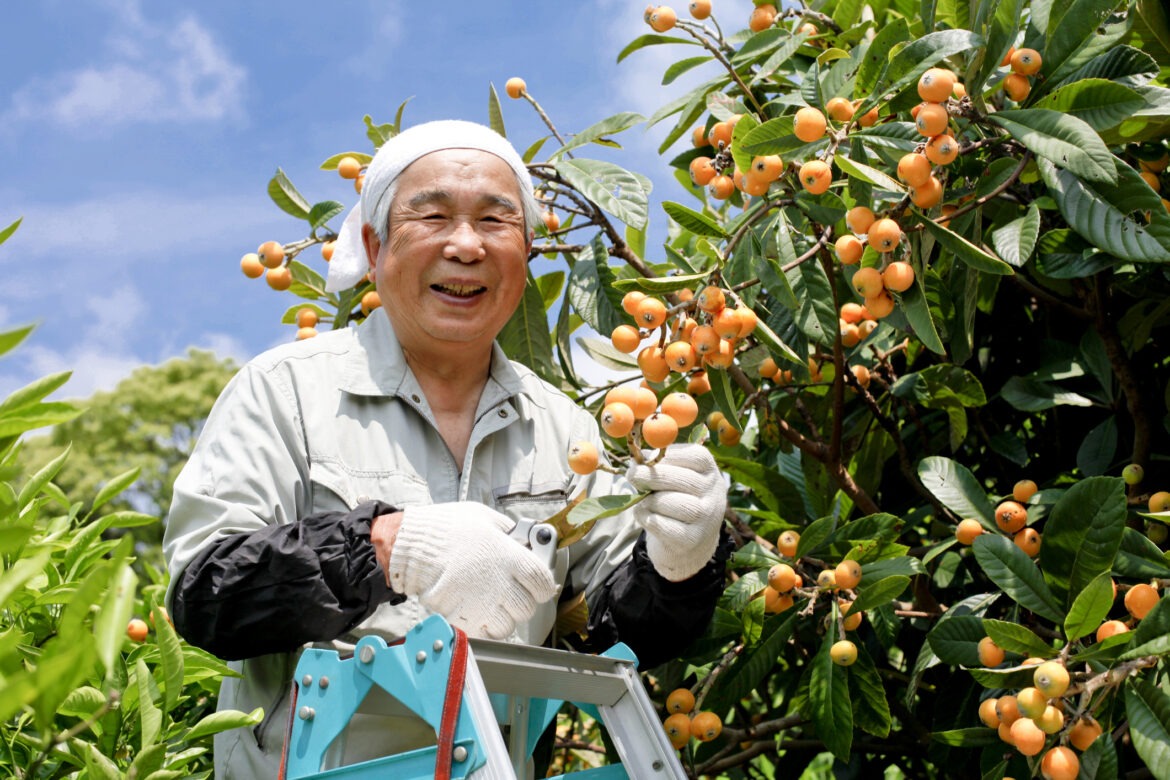Can Immigration Really Save Rural Japan? Inside the Countryside’s Boldest Experiment
In the remote mountain village of Nanmoku, nestled in Gunma Prefecture, something remarkable is happening. Where once stood empty houses and shuttered shops, a Vietnamese entrepreneur now runs a thriving café, serving fusion dishes that blend traditional Japanese flavors with Southeast Asian spices. This isn’t just a heartwarming story—it’s a microcosm of Japan’s most audacious experiment in rural revitalization.
As Japan grapples with its most severe demographic crisis in modern history, an unexpected solution is taking root in the countryside: immigration. With the nation’s population falling to approximately 123 million as of June 2025, and a staggering 29.3% aged 65 or older, rural areas face an existential threat. Yet in this challenge lies opportunity, as foreign workers and entrepreneurs are breathing new life into communities that seemed destined for extinction.
The Rural Crisis Reaches Breaking Point
The statistics paint a stark picture of rural Japan’s decline. Nearly 900 municipalities are classified as “at risk of disappearance,” according to recent government assessments. The fertility rate has plummeted to just 1.2 children per woman, far below the 2.1 needed for population replacement. This demographic tsunami hits rural areas hardest, where young people have fled to cities for decades, leaving behind aging communities struggling to maintain basic services.
Consider the village of Yubari in Hokkaido, which has become a symbol of rural decline. Once home to 120,000 residents during its coal mining heyday, the population has dwindled to fewer than 8,000. Schools have closed, businesses have shuttered, and entire neighborhoods stand empty. This pattern repeats across Japan’s countryside, from the rice terraces of Niigata to the fishing villages of Kyushu.
The economic implications are staggering. A Reuters investigation revealed that rural firms face a projected 3.4 million worker shortfall by 2030, with entire industries—from agriculture to eldercare—at risk of collapse. Traditional family farms that have operated for generations cannot find successors, while small manufacturers struggle to maintain production lines. The ripple effects extend beyond economics, threatening Japan’s cultural heritage and environmental stewardship that rural communities have maintained for centuries.
Immigration Emerges as an Unlikely Lifeline
Against this backdrop of decline, Japan’s immigration policy has undergone a quiet revolution. In 2022, the country welcomed 144,000 long-term immigrants, with 55% classified as labor migrants specifically addressing rural workforce shortages. This represents a dramatic shift for a nation historically resistant to immigration, driven by economic necessity rather than philosophical change.
The government’s Skilled Worker visa categories, introduced in 2019, have become game-changers for rural revitalization. These programs, particularly the Skilled Worker 1 and 2 visas, opened doors for semi-skilled workers in agriculture, eldercare, construction, and hospitality—sectors that form the backbone of rural economies. Unlike previous guest worker programs, these visas offer pathways to permanent residency, encouraging long-term investment in communities.
The Specified Skills visa program has been particularly effective, allowing workers to transition between employers and eventually bring family members, creating stronger community ties.
The results are already visible. In Hokkaido, Vietnamese agricultural workers have revitalized potato and dairy farming operations. In Miyazaki, Filipino caregivers have enabled rural nursing homes to expand services. These aren’t temporary fixes—they’re building blocks for sustainable rural economies.
Local Governments Enter the Global Talent Race
Perhaps nowhere is Japan’s rural transformation more evident than in the fierce competition between prefectures for foreign residents. Hokkaido, Miyazaki, Saga, Kagoshima, Okinawa, and Nagasaki all reported foreign resident growth exceeding 15% in 2024, according to recent government data. This growth isn’t accidental—it’s the result of strategic local initiatives designed to attract and retain international talent.
Local governments have developed sophisticated recruitment strategies that go far beyond basic work permits. Hokkaido offers housing subsidies covering up to 50% of rent for the first two years, plus bonus grants of 300,000 yen after three years of residence. Miyazaki provides Japanese language classes, cultural orientation programs, and even matchmaking services to help foreign residents integrate into local communities.
The competition has sparked innovation in rural development. Saga Prefecture partnered with Tokyo-based companies to create remote work opportunities, allowing international digital nomads to contribute to local economies while maintaining urban clients. Kagoshima established “Innovation Hubs” in abandoned schools, providing co-working spaces and startup incubators for foreign entrepreneurs.
These efforts are paying dividends. In Okinawa, Brazilian-Japanese descendants have established successful tourism businesses, leveraging their multicultural backgrounds to attract international visitors. In Nagasaki, Chinese entrepreneurs have revived traditional crafts industries, combining ancient techniques with modern marketing approaches. Rural Japanese culture is being preserved and reimagined through fresh perspectives.
Economic Transformation Takes Root
The economic impact of immigration extends far beyond filling labor shortages. DFG-funded research in Kyushu documents how immigrants and digital nomads are launching farms, cafés, guesthouses, and tech startups, fundamentally reshaping local economies. These ventures often succeed where traditional businesses failed because they bring global perspectives to local challenges.
Take the example of Maria Santos, a Brazilian entrepreneur who established an organic farm in rural Kumamoto. Her operation not only supplies local markets but exports specialty products to Brazil, creating an international supply chain that benefits the entire region. Similarly, a group of Nepalese residents in Tochigi Prefecture has developed a successful agritourism business, offering authentic cultural experiences that attract visitors from Tokyo and beyond.

The ripple effects are substantial. New businesses create employment opportunities for Japanese residents, generate tax revenue for local governments, and establish supply chains that connect rural areas to global markets. The “economic metabolism” that government policies promote—allowing weaker firms to fail while stronger ones adapt—increasingly depends on immigrant labor and entrepreneurship.
Traditional industries are being revitalized through international partnerships. In Shizuoka, Thai workers have introduced efficient greenhouse technologies that doubled vegetable yields. In Gifu, Bangladeshi entrepreneurs have modernized traditional textile production, creating export opportunities that were previously impossible. These examples demonstrate how immigration can preserve rural economies while transforming them for the 21st century.
Sustainability and Cultural Renaissance
Beyond economic benefits, immigration-driven rural revitalization is creating unexpected environmental and cultural advantages. A recent study in Nature Sustainability highlights how rural depopulation threatens biodiversity, as abandoned farmland becomes forest or is converted to industrial use. Immigration-linked revitalization helps preserve traditional farming practices that maintain landscape diversity and ecological balance.
Foreign residents often bring environmental awareness that complements traditional Japanese sustainability practices. In Shimane Prefecture, Indian agricultural workers have introduced organic farming techniques that reduce chemical inputs while maintaining crop yields. In Yamanashi, Filipino residents have established community gardens that serve both practical and social functions, creating spaces for cultural exchange while producing local food.
The cultural impact is equally profound. Homegrown “Chiiki Okoshi Kyōryokutai” initiatives, which send young entrepreneurs and remote workers into rural towns, are creating grassroots transformation that bridges old and new. These programs, enhanced by international participation, are preserving traditional festivals, crafts, and customs while adapting them for contemporary relevance.
Practical Tips for Rural Communities
- Develop comprehensive welcome programs: Address housing, healthcare, and education needs to attract long-term residents.
- Invest in language and cultural bridge-building: Offer Japanese language classes and support cross-cultural exchange.
- Leverage digital infrastructure: Ensure high-speed internet and e-commerce access to tap global markets.
- Create entrepreneurship pathways: Provide microloans, mentorship, and simple licensing for immigrant business owners.
- Track your revitalization progress with community journals and surveys. Try the Magnificent Japan Journals for inspiration!
Common Mistakes to Avoid
- Treating immigrants as temporary solutions: Integration and community-building drive sustainable growth.
- Ignoring cultural and language barriers: Prepare proactively for religious, dietary, and communication needs.
- Relying on a single industry: Diversify your economy to ensure resilience against future shocks.
Conclusion: A Rural Renaissance in Progress
Japan’s rural immigration experiment represents more than demographic necessity—it’s a blueprint for 21st-century rural development. As hundreds of villages face extinction, foreign workers and entrepreneurs are proving that decline isn’t inevitable. From Vietnamese cafés in mountain villages to Brazilian organic farms in the countryside, immigration is creating a rural renaissance that preserves traditional values while embracing global perspectives.
The success stories emerging from places like Hokkaido, Miyazaki, and Kyushu demonstrate that rural areas can compete for global talent when they offer genuine opportunity and community. As Japan continues to navigate its demographic transition, these rural laboratories of multiculturalism may provide the model for sustainable rural development worldwide.
For communities worldwide facing similar challenges, Japan’s experience offers both inspiration and practical guidance. Rural revitalization through immigration isn’t just about filling labor shortages—it’s about creating vibrant, sustainable communities that honor the past while building the future. The roots may be new, but they’re growing deep in Japan’s old towns.
